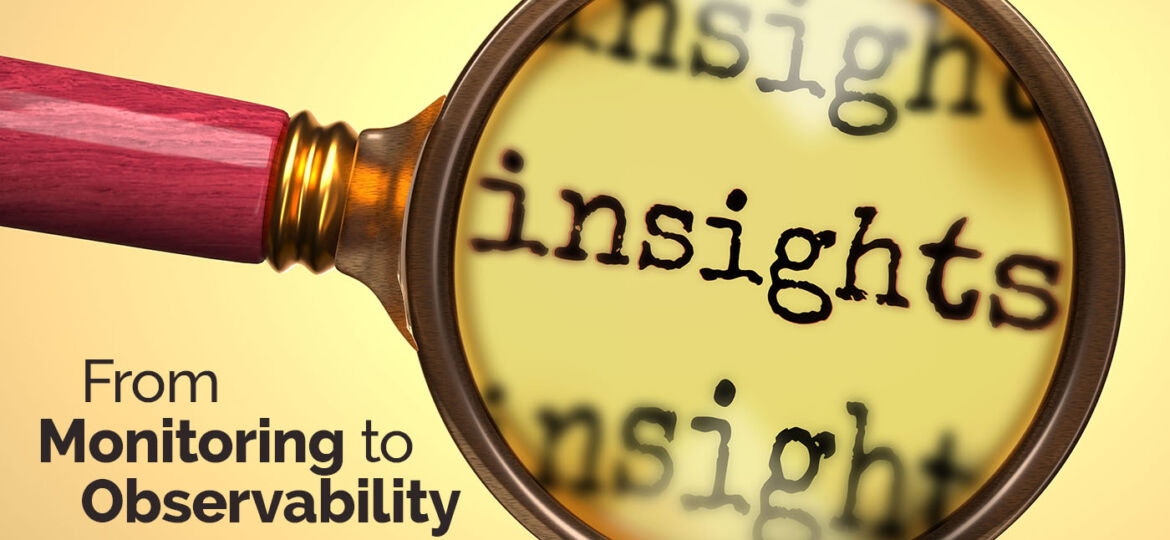
From monitoring to observability
What is the difference between monitoring and observability?
Monitoring involves collecting data from various sources within a system and analyzing it to identify and diagnose issues. This can involve setting up alerts and dashboards that track specific metrics, such as server response times or error rates. The goal of monitoring is to detect problems as they arise so that they can be addressed quickly before they escalate into more serious issues.
Observability, on the other hand, is a more holistic approach to understanding complex systems. Rather than only focusing on specific metrics, observability involves collecting data about the entire system and making it accessible to engineers in a way that allows them to gain insights and diagnose problems.
This can involve collecting data from a wide variety of sources, including logs, metrics, and traces, and then using tools like machine learning algorithms to identify patterns and anomalies.
While monitoring is useful for identifying specific problems, observability provides a more comprehensive view of a system’s behavior and helps engineers to understand how different components are interacting with one another.
This can make it easier to identify and address underlying issues that may be contributing to multiple problems, rather than just fixing individual symptoms as they arise.
Pros
Improved Root Cause Analysis: Observability provides context & visibility into the underlying causes of issues. Which will help to identify & fix problems, reducing downtime & improving system reliability.
Better Collaboration: Observability makes it possible for multiple teams to access & analyze the same data, leading to better communication & collaboration.
Faster Time to Resolution: Faster detection & resolution of issues, reducing the time required to identify & fix problems.
Increased System Resilience: Identify patterns & trends to indicate potential issues before they become a problem. Take proactive measures and improve system resilience.
Better Understanding of User Behavior: Get insights into how users interact with your system, how they use different features, and where they encounter issues. Make data-driven decisions to improve the user experience & increase user satisfaction.
Cons
Initial setup: Setting up an observability platform, can require more work, certainly on large or complex systems.
Cost: Depending on the solution, license fees can be high. Luckily, Elastic Observability is affordable & transparent.
Skill Requirements: You might need a skilled specialist to implement the observability platform effectively.
Data: Observability platforms generate a large amount of data. Use analysis tools and dashboards like Kibana to gain insights.
How do I transition from monitoring to observability
If you are thinking of upgrading your monitoring setup to a powerful observability solution, we’ve summed up some steps for you to take:
Which goals & objectives do you hope to achieve with observability? Compare this with your current monitoring set-up and identify the gaps.
Several Observability solutions exist, like Dynatrace, Datadog, and Elastic Observability. Do you want a single platform to cover both Observability & Cybersecurity?
Start instrumenting your systems to collect metrics, logs, and traces. Analyze and visualize the collected data. Create dashboards with Kibana to display key metrics to identify patterns and anomalies.
Set up alerting rules, and develop a response plan. Automate remediation steps or escalate issues to your team. Monitor & evaluate your observability approach.
Extra benefits of choosing Elastic Observability
If you decide to go for Elastics observability solution, you might be pleasantly surprised to find out that Elastic also supports a cybersecurity solution (XDR) on the same platform.
Both solutions are part of the Elastic Stack and are designed to work together seamlessly. Elastic Security is a security information and event management (SIEM) solution that provides advanced threat detection and response capabilities. With a unified view of your systems, you can detect and respond to security threats more quickly and accurately, reducing the risk of data breaches and other security incidents.


Elk Factory can help
Elk Factory is an Elastic Premier Partner and has the expertise to help you transition into a powerful observability set-up.
Contact us, and discover our added value.
